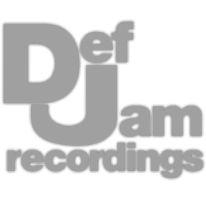Professional Analog Mastering.
Professional Analog Mastering.










When mixing bass, it helps to understand the frequency ranges each instrument is occupying - this way we can introduce processing to separate overlapping frequencies, making competing signals more distinct and unique. We can differentiate bass instruments with EQ, compression, saturation, resonance reduction, and subtle stereo and temporal effects.
For this video I made a demo in which we have a lot of competing signals in the low-frequency range - so let’s see how we’d go about cleaning everything up and creating distinct spaces for each track.
With analyzers, we can see each bass track’s fundamental - in this example the root note is either E1 at 41Hz. like with the kick drum, or E2 at 82Hz like with the Bass synth. Examining the response first gives you a better understanding of what will need to be separated.
Before we start adding processing, let’s listen to the full before and after to hear how the track sounds originally, and what it’ll sound like when we’re done.
Now that understand where the powerful frequencies lie for each track, we can prioritize some tracks over others and begin attenuating where needed. For example, I attenuated some of 41Hz and 164Hz on the bass guitar since it competed with the kick, upright bass, and the low piano.
Or on the upright bass, I attenuated some of G1 at 49Hz and E2 at 82Hz since it overpowered higher frequencies in my bass and bass synth.
Let’s listen to these EQs being enabled, and notice how attenuating strong overlap gets us closer to a balanced sound.
After I’ve attenuated strong overlapping frequencies, I’ll use compression to create unique timbres and even stereo placements for my tracks. For example, on the kick drum, I used an 1176 compressor to distort the kick’s transients and give it a punchier sound - emphasizing higher frequencies over the lower competing ones.
On my bass synth, I used this lifeline Console plugin by Excite Audio to compress the mid image more than the side - resulting in both dynamic control and stereo expansion for the synth. I also lowered the attack and release to add some slight distortion.
Let’s take a listen to compression being introduced, and keep in mind how it can do a lot more to a sound than simply control dynamics.
By using distinct saturator plugins and saturation types, we can create unique harmonics or overtones for each track - this will help further separate our instruments. For example, I used this PSP saturator on my bass synth to introduce hard clipping - but then used modern tape saturation on the bass guitar.
You’ll notice that I also emphasized saturation on differing low frequencies for each.
Let’s introduce saturation to our tracks, and notice how their unique harmonics help differentiate each signal.
Most of you have probably heard of side-chain compression - so let’s use this ShaperBox plugin by Cableguys to accomplish it. I used it on my upright bass, and then side-chained the kick. Now what’s cool about this processor is that it lets me compress only the lows.
So whenever the kick hit, the competing frequencies were attenuated, but the highs that helped separate the 2 stayed intact - resulting in a brighter, more defined sound.
Now, this is slightly unrelated, but I also used this plugin to create a sweeping filter for every bar - you’ll notice when we play the demo how this frequency cut gives other instruments a moment to cut through.
Let’s take a listen to this plugin being enabled.
Next, I’m going to insert an EQ on my bass synth and bass guitar to amplify higher frequency ranges and help set to 2 apart. You’ll notice on the synth I amplified some of E5 and G6, while on the bass guitar I amplified G5, E7, and G7.
By amplifying varying in-key frequencies, I give each instrument some room while clarifying some musical aspects of each performance. Let’s take a listen.
We touched on stereo placement earlier when I used m/s compression to widen my bass synth, but now I’ll use some subtle sample delay to widen my low piano. You might have also noticed that I panned my kick very slightly to the left and my bass guitar to the right.
Lastly, on my upright bass, I used a M/S EQ to make the lows slightly more mono, and then expanded the width of my E5 note.
Let’s listen to these changes, and notice how although we typically want to keep the bass centered, a little variation can help differentiate instruments.
Next, I’m going to use this SparkVerb by UVI to create some unique reverb for my bass guitar - I’ll keep everything super short and the mix low, but use a larger size and some pre-delay to help the bass’s transient cut through. The real reason I used this plugin though is for the diffusion section.
By controlling the start time of my diffusion, and its amount, I can create a cool reverb slap-back effect that augments the snap of the bass guitar. Let’s listen to how this effect gives the guitar a unique identity in the mix.
With this resonance reducer, I can side-chain any instrument to dynamically reduce overlapping frequencies on any other instrument. For example, I inserted it on the bass synth and focused the attenuation on the mids - whereas on the upright bass I side-chained the bass synth and attenuated lows and high mids.
This really comes in handy as the last insert to clean up the signal and to ensure there’s a balance between competing signals. Let’s take a listen.
So, this is something I’ve been doing throughout the entire video, but it’s somewhat specific so I thought I’d cover it later. In short, my bass guitar was noisy, so I used a multi-band processor to cause downward expansion or gating, but only on the highs.
Let’s listen to how this makes high-pitch noise much less noticeable on a DI bass.
Last up, I changed the outputs of each track to a collective bus, on which I inserted the plugin Fresh Air to subtly brighten everything. Then with a M/S EQ, I made the lows more mono with a HP filter on the side image, before boosting some highs.
Routing the tracks like this made it easier to collectively shape the sound of my bass tracks. Let’s take a listen.